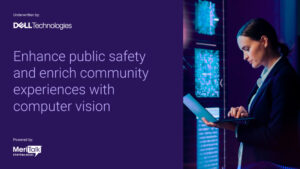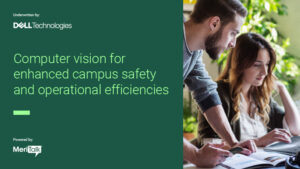From artificial intelligence (AI)-powered digital assistants that guide citizens through state portals to digital twins that model transportation infrastructure, state and local governments are finding practical pathways to put AI to work.
K-12 IT leaders overwhelmingly agree that artificial intelligence (AI) is vital for students’ success, but most districts are still stuck in pilot mode, according to new MeriTalk research.
State and local government IT leaders say the AI payoff is real – and mission-critical – but many efforts are stalling short of broad deployment, according to new MeriTalk research.
Higher education IT leaders are bullish on artificial intelligence (AI) but struggle to scale pilot projects organization-wide, according to new research from MeriTalk.
Kentucky Gov. Andy Beshear announced on July 10 that the state is awarding a total of $750,000 to eight Kentucky-based tech companies as part of the state’s Small Business Innovation Research (SBIR) and Small Business Technology Transfer (STTR) matching funds program.
With a March presidential executive order putting some breathing room between the Federal government and states on cybersecurity protections – and state and local governments hoping for a second go-round of funding from Congress under the 2021 State and Local Cybersecurity Grant Program (SLCGP) – we checked in with Gary Barlet, Illumio’s public sector chief technology officer, for his read on the new landscape.
The use of artificial intelligence-powered computer vision and edge computing are combining to reshape public safety and customer service capabilities, local government and municipal officials said during a new webinar produced by MeriTalk and underwritten by Dell Technologies.
Integrating artificial intelligence (AI) and computer vision technologies is paying off with improvements to campus safety and operational efficiencies, AI experts told MeriTalk in a new webinar in which they advised organizations to consider a deliberate approach to implementation.
At NASCIO’s 2025 Mid-Year Conference, the energy in Philadelphia was focused on the future but grounded in pragmatism. In the post-conference State Tech Vision roundtable hosted by MeriTalk, Amanda Crawford, executive director and state CIO of Texas; Heather Abbott, West Virginia’s CIO; and Tom Nieto, president and COO of PayIt, unpacked how states are translating NASCIO’s top priorities into citizen-centered outcomes.
As state and local governments ramp up digital payment options to better serve citizens, industry and government leaders explained during the PayIt Government Adoption webinar that government leaders should push forward with service offerings that both improve citizen services and boost efficiencies for government.
Recent
-
 Trump Signs Order to Preempt State AI Laws and Push Single Federal Framework
Trump Signs Order to Preempt State AI Laws and Push Single Federal Framework -
 Government, Industry, Academia Collaboration Fuels AI Progress
Government, Industry, Academia Collaboration Fuels AI Progress -
 Indiana DOE Partnership Targets STEM, Digital Learning Tools
Indiana DOE Partnership Targets STEM, Digital Learning Tools -
 States, Schools Harness Data and Workforce Programs to Combat Fraud, Cyber Threats, and Service Outages
States, Schools Harness Data and Workforce Programs to Combat Fraud, Cyber Threats, and Service Outages









